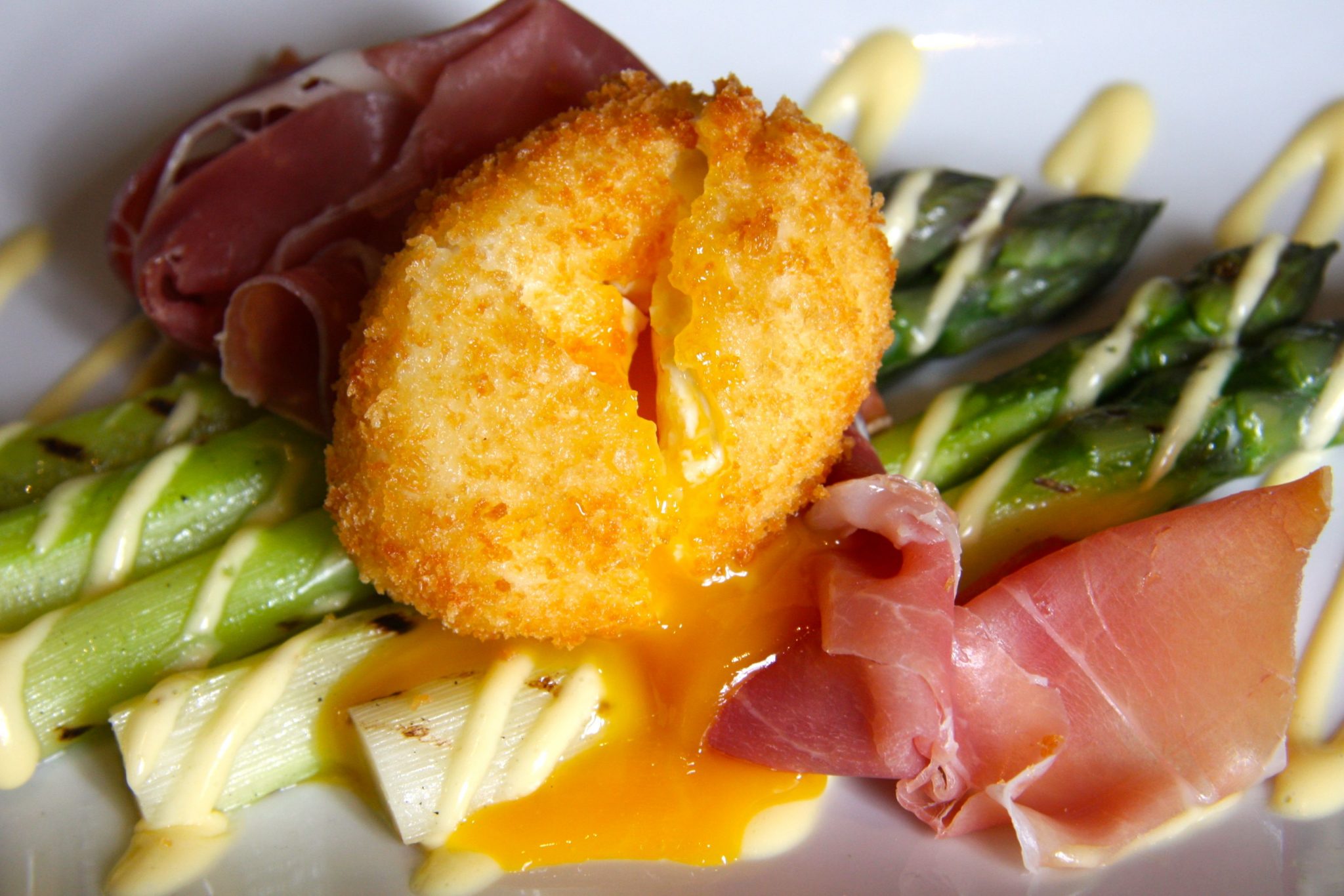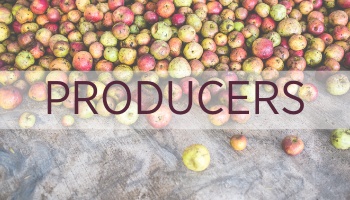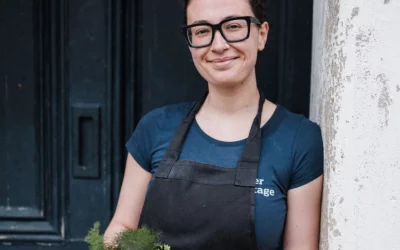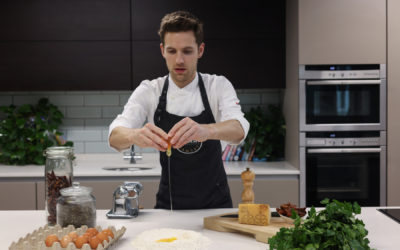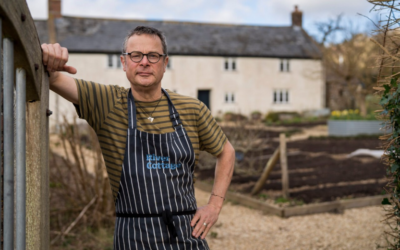Paying homage to the ‘Noble Gras’ this asparagus season…
There may not be much to celebrate in the world of food at the moment – apart from its continued availability, which is something to be incredibly grateful for. But as we move into the last weeks of Spring, there is one ray of hope on the culinary calendar; asparagus season. Evesham in Worcestershire is home to the official ‘Asparagus Festival‘ and is celebrated annually at the foot of their cathedral (pictured) with a series of events.
There’s something about asparagus that brings understated elegance to any plate; a simple supper of soft-boiled eggs with a buttered slices of crusty bread and a few crisp, chargrilled stalks, drizzled in olive oil and scattered with shavings of sharp parmesan or pecorino, is the stuff of magic. It was certainly good enough for Julia Roberts in Eat, Pray, Love…
A versatile ingredient
Yet its versatility as a meal ingredient is often under-explored; there are so many things you can do with asparagus, apart from its traditional position on the side of something else. Enjoy it cold in a salad to add a little bite, toss it into a lemony bowl of pasta, arrange it artfully on a quiche or scatter it over an oozy risotto, and you’ll get a delightful taste of Spring that few other vegetables can provide.
Although asparagus was little noted in Europe until the 16th century, its roots go back far deeper. In ancient times, it was used as a vegetable, a diuretic and even an aphrodisiac.
Consumed by the Greeks and Romans, the mighty Roman Emperor Augustus even created an ‘Asparagus Fleet’ to transport the vegetable from field to table more efficiently, while the Greek physician Galen acknowledged its beneficial medicinal properties.
Today, this humble vegetable is enjoyed around the world, with China, the US, Peru, Mexico and Europe being the largest asparagus producers. The UK itself is the largest producer in Northern Europe, with Worcestershire’s verdant Vale of Evesham at its centre. In fact, so intertwined is asparagus with the region’s culture that Worcestershire holds an annual British Asparagus Festival, as well as an eagerly-anticipated ‘Asparagus Run’. Though sadly both on-hold this COVID-19 year!
The earthy, muted colour palette of asparagus also provides a clue to its origin; British and American asparagus varieties are green, while French is purple and Spanish is white, due to being grown beneath the soil.
Aside from pepping up your Spring menu, asparagus is also packed with nutrients, making it one of the healthiest foods you can eat. It contains fibre and vitamins A, C, E and K, as well as calcium, potassium, selenium and iron. With 93% of asparagus being made up of water, it’s also incredibly low in calories and sodium.
Official day of asparagus launch is St George’s Day, April 23rd, to its unofficial season end of Mid-summers Day, June 21st, but with changing seasons and climate these dates are as flexible, and unpredictable as our weather. May to July is considered to be optimum asparagus season; so how best to buy, store, cook and enjoy it?
Look for perky tips and firm, straight stalks. Our chefs recommend storing your spears in a jug of cold water in the fridge, and to prep it, simply bend the spear until it snaps and throw away the ‘woody’ end.
Below are some cooking asparagus ‘tips’ from our friends at the Asparagus Festival held in Evesham every year from April 23rd.
How to Blanch (or Boil) Asparagus
Blanching, or briefly submerging vegetables in boiling salted water, can be a wonderful way to cook asparagus. By cooking asparagus quickly in truly boiling water and then fully chilling it in ice water, you can “set” the green colour. Bring a large pot of salted water to a boil, drop asparagus in and cook until just tender, anywhere from 1 to 4 minutes depending on thickness. Drain and put asparagus in ice water until fully cool. Remove asparagus from ice water and pat dry. Then they are ready for service.
Asparagus Cooking Tips
How to Grill Asparagus
Grilling asparagus is a great way to preserve its grassy flavour—and introduce a smoky edge in the process. Simple toss trimmed or peeled asparagus spears with a bit of vegetable oil and put them on a hot grill. Cook, turning to brown evenly, until tender, about 10 minutes total. Sprinkle with salt and/or lemon juice and serve hot or at room temperature.
How to Microwave Asparagus
Microwaving asparagus cooks them in a way similar to steaming. To Microwave asparagus: Set asparagus in a microwave-safe baking dish, add 2 tablespoons of water, cover, and microwave on high setting until tender, which should take about 2 to 3 minutes. Leave standing and covered for about 3 minutes and they will be ready to eat.
How to Pan-Roast Asparagus
Pan roasting is a combination of steaming and sautéing and gives you the browned edges of grilled or roasted asparagus without the hassle of heating up a grill or oven. Heat some cooking oil or butter in a large frying pan over high heat. Add asparagus, cover, and cook, shaking the pan now and again, until asparagus is browned and tender, should take about 10 minutes.
How to Roast Asparagus
Turn on oven, put asparagus in oven, cook until brown and tender. Seriously, it pretty much is just that easy. Just add a bit of cooking oil to the asparagus to keep it from drying out in the oven. Sprinkle with salt and maybe a squirt of lemon juice before serving and enjoy.
How to Sauté Asparagus
Cooking asparagus over high heat while stirring often leads to tender, bright green bites. This method works best with asparagus that has first been cut into 1- to 2-inch lengths. Heat a large frying pan over a high heat, add cooking oil or butter and asparagus and cook, stirring, until the asparagus is tender, usually taking about 5 minutes depending on how thick the spears are.
How to Steam Asparagus
Asparagus is usually steamed as whole stalks, but it can be steamed cut into bite-size pieces, if you like. Whether you steam it whole or chopped, place asparagus in a steamer rack and set over boiling water. Cover and cook until asparagus is tender, 4 to 8 minutes depending on the thickness of the asparagus stalks.
How to Stir-Fry Asparagus
Stir-frying brings out the nutty edge of asparagus’ grassy flavour. Cut asparagus into 1- to 2-inch lengths. Heat a wok or large frying pan over a high heat, add cooking oil and when it is hot enough to shimmer toss in the asparagus. Cook, stirring pretty much constantly until asparagus is tender and browned on the edges, 3 to 5 minutes depending on thickness of asparagus. If you want to include garlic, green onions, ginger, or other aromatics, add them right before adding the asparagus and let them sizzle for just a minute before tossing in the asparagus.
We hope we’ve inspired you to bring this delicious vegetable into your lockdown menu, but if you’d like a few more ideas, we’ve put together our favourite recipes below:
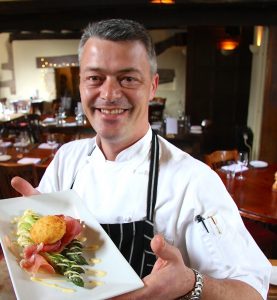
RECIPE: Asparagus, Crispy Hen’s Egg, Parma Ham, Truffle Hollandaise
By Chef Mark Chandler of the White Hart Fyfield, Oxfordshire
Ingredients (Serves 4)
24 asparagus spears
5 Free range eggs (1 beaten)
1 tbsp White wine vinegar
3 tbsp Flour
50g Panko breadcrumbs
4 Slices Parma ham
Hollandaise:
3 Egg yolks
1 tbsp Lemon juice
225g Butter
Grated Black truffle or a few drops of good quality truffle oil
Pinch of salt
Oil to deep fry
Crispy Egg:
Bring a pan of water to a low simmer and add the vinegar. Using a spoon, stir in a circular motion to create a slow “whirlpool”. Gently crack an egg into the middle of the whirlpool. Cook gently for 3-4 minutes (depending on size of egg). Remove and refresh in iced water. Repeat with 3 more eggs. Remove the eggs from the iced water and gently pat dry. Pané the eggs by rolling them in flour, then dipping them in the beaten egg and finally rolling them in the breadcrumbs. It is important to ensure the eggs are completely covered with breadcrumbs and there are no gaps. Chill until required (they can be made up to one day in advance). To serve, place in a deep fat fryer for 1-2 minutes at 180C or until golden.
Hollandaise:
Place the butter in a small pan over a medium heat, until the butter melts and starts to foam. Remove from the heat. Bring a pan with a couple of centimetres of water to a simmer. In a bowl that fits the pan, combine the egg yolks, lemon juice and salt. Place the bowl over the pan and whisk the yolks until you have a consistency like double cream. Take great care with the temperature of the water – too hot and you may curdle the eggs, too cool and they will not thicken and may split! Add the melted butter a little at a time to begin with, whisking constantly, until all has been incorporated, leaving the milky residue in the pan. Add 1 tbsp of cold water. Add a few drops of truffle oil or freshly grated truffle. Check for seasoning. Best served immediately (or you can keep it warm for up to 30 minutes).
Asparagus:
Cut the woody bases from the asparagus spears and peel the skin from the bottom half. Cook in boiling, salted water for 1 ½ minutes and drain. We then chargrill briefly to give a lovely rich flavour but this is optional.
To serve:
Place 6 asparagus spears on each plate. Take a slice of Parma Ham and place it on the asparagus. Place the egg onto the ham and spoon the sauce over and around. Delicious!

Searching for more recipes from top Chefs?
Or visit our live feeds on our Facebook Page
More Recipes, Offers & News? Sign up to our Free Foodie Club newsletter to enter.

